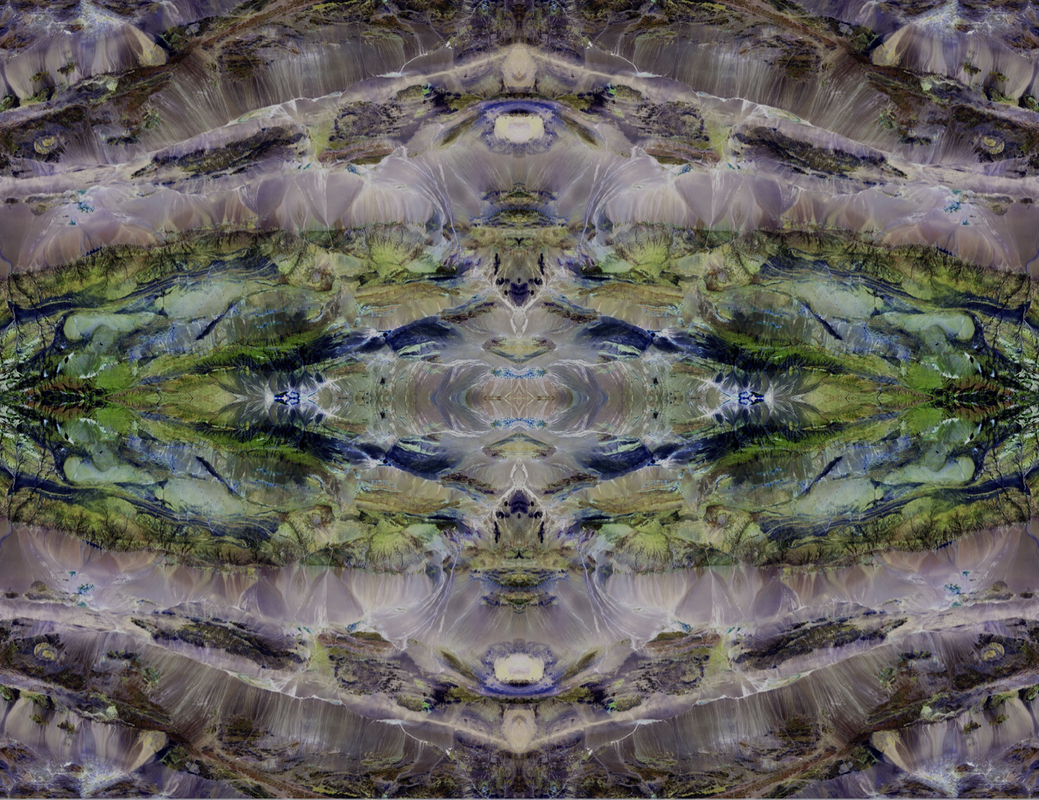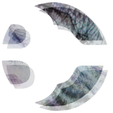|
On May 27th biodesign peers professors Rachel Armstrong and Claudia Pasquero, and researchers Maria Kuptsova and Annick Saralegui joined me in conversation on Clubhouse to discuss the most pioneering research and development in the field. Though many scientific and wider STEM and STEAM disciplines are male-dominated biodesign is not, with many women among its foremost influential researchers and practitioners worldwide.
The built environment industries and their supply chain being among the worst industrial offenders in respect of environmental issues including carbon emissions, unsustainable materials sourcing, and virgin-land use conversion, among others, biodesign has the potential to address not one, but several of these issues, and particularly so when it integrates biomaterials grown on or near site. But, as with emerging fields of research and practice more generally, the most radical shift involved in their adoption is not technical, but philosophical - how and why we understand the world about us and our relationship with it. Hence, questions we explored in our discussion included, 'how are biodesigned approaches to architecture and urban design different to Modernist and other 21st century schools?'; and 'what new skills do students of biodesign need to learn that weren't on the curricular of old?'. More technical questions we addressed included 'what are the most significant advances in the field and why?'; 'Biology is really small - operating at the cellular level - buildings are really big, how do we resolve issues of scale?'; 'what does biodesign become - if it's biotechnology today, where does it go next, or is this something that is going to date along with its technology?'; 'what are the biggest challenges in the field?'; 'which are the best built examples of biodesign in architectural and urban design practice?';and 'what's the future of biodesign?'. The common themes in our collective answers to these and other questions were that biodesign involves a fundamentally different approach to past schools of architecture and urban design; we don't create end states, but instead sew the seeds of evolving architectural and urban design futures; our role is not one of control, but of curation, and we operate not as the pinnacle of a hierarchy, but as one of the number of collaborative agents, both human and non-human, living and non-living; our role as biodesigners involves not merely theoretical research, but hands-on experimentation both in the lab and in the field, observing how biological and in turn ecological systems respond to both environmental and wider changes over time. Some of the most profound shifts in our collective thinking came not from reading publications authored by peers, but from witnessing the workings of the natural world first-hand, and from thinking about how those workings could inform and inspire both our own, and wider research and practice. We also noted how our understanding of biodesign, and of the bio-fields in general, had advanced over time, and particularly with respect to understanding how to integrate the many and complex elements across the design of our experiments and the architectural and urban design proposals developed from their outcomes. What of the future of biodesign? Our consensus was that as the field and its sister fields evolve the silos in thinking and practice are dissolving, and that this trend will continue over-time. We also noted that though biodesign remains a niche research and practice field its adoption is rapid, its visibility now many times higher than a decade ago, and the number of researchers and practitioners entering the field is high: the field is edging towards the mainstream. Find out more about biodesign by reading Professor Rachel Armstrong's books The Art of Experiment: Post-pandemic knowledge practices for the 21st Century; Soft Living Architecture; and Experimental Architecture: Designing the Unknown; and look out for her team's next exhibit, 'ALICE', which will be on show at the V&A museum in London in September; read Professor Claudia Pasquero's book Systemic Architecture: Operating Manual for the Self-Organising City; read my open access platform on biodesign applications in addressing the problem of living with wildfire, Panarchic Codex®; and read Annick's bio-zine, Symbiont, which features works by biodesign students from around the world. Also look out for a forthcoming book from Routledge, which features contributions from Claudia and myself, together with several of the foremost influential biodesign thinkers worldwide. Connect on Clubhouse here.
0 Comments
Your comment will be posted after it is approved.
Leave a Reply. |
AuthorMelissa Sterry, PhD, chartered design scientist, systems theorist, biofuturist, and serial founder inc. Bionic City® Bionic CityAsking the question "how would nature design a city" since 2010.
Archives
October 2023
Categories#bionics
#biotech #biodesign #bioscience #biomimetics #biotechnology #bioengineering #bioinnovation #bioaesthetics #biorevolution #bioenterprise #biosystems #biocreative #biofuturism #biofutures #biocentric #biofacture #biotecture #biovation #biofiction #biourban #biocities #biolab #bioart #STEM
#STEAM #STEAMED #STEMcomms #STEAMcomms #STEAMEDcomms © Bioratorium Limited & Melissa Sterry
2021 All Rights Reserved |

 RSS Feed
RSS Feed

